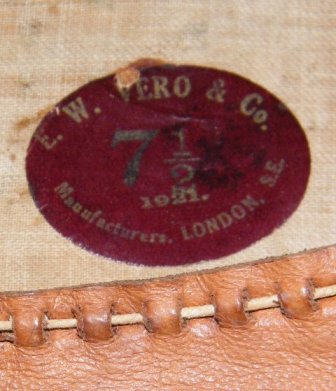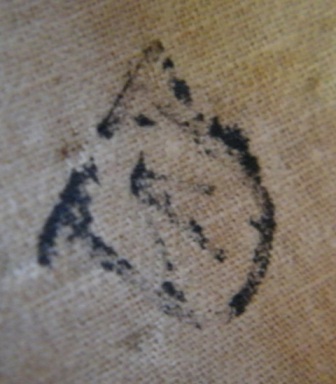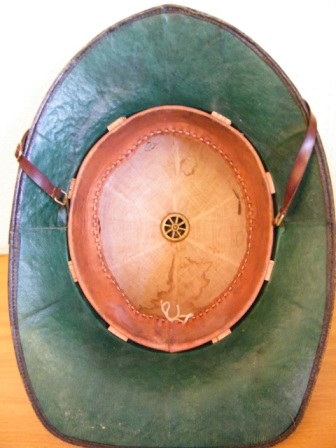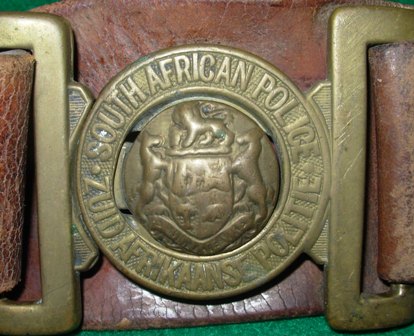
sabrigade
-
Posts
1,707 -
Joined
-
Last visited
-
Days Won
34
Content Type
Profiles
Forums
Blogs
Gallery
Events
Store
Posts posted by sabrigade
-
-
I have not added or contributed to discussions for a while due to work circumastances.
This is a recent acquisition to my collection and it has taken a lot of negotiation to acquire it.
It has been summised that the ZARP's wore the same uniform as that of the State Artillery during the 1880's as they were part of that force at the time.
In the early 1890's a unique police uniform for the ZARP's started to appear and this can be concluded from period photographs taken at the time.
In 1895, a contract was concluded between the Transvaal and the Company of Gordon Mitchell in London for the manufacture and delivery of uniforms.
The uniform in the posts to follow is an example of one of their products.
0 -
Hi Brett,
I have been in the field and away from this device for a few weeks now. Please feel free to continue. I have some bronze Sudan 1910 medals and a bronze Queen's Sudan pair that I can add to your thread.
Regards,
Will
0 -
I really think we should start a thread on these helmets and other early headgear. Not much reference material is available and sources for items are not always reliable.
0 -
I also have a SAPolice Helmet and the inside looks nearly identical to the SAMR helmet picture here.
Can you post it?
0 -

MAKERS TAG INSIDE THE HELMET
0 -

UNION DEFENCE FORCE STAMP INSIDE THE HELMET
0 -

A CLOSER PHOTOGRAPH OF THE HELMET'S INTERIOR
0 -

THE INSIDE/INTERIOR OF THE SAMR HELMET IN MY COLLECTION
0 -
Will,
thanks for the information. I shall attempt to locate a copy of the article you mention.
Please start a thread on SA bush helmets, I am a helmet collector after all:D
Hi Stuart,
The SAMR wore Wolseley pattern helmets until the last regiment was disbanded in 1926. The example I have is dated 1923 if my memory serves me correctly.
I will have photographs taken this afternoon.
I have contacted Hamish Pattison and will get a copy of the article for you.
Regards,
Will
0 -
Hi Will,
I wondered if you got a copy of the book. Do you know when the Polo helmet was officially adopted by the SA forces and why did they choose that style over the Wolseley.
The Kimberley and Witwatersrand Regiments wore the polo style but from a Player's cigarette card I have Regiment Louw Wepener seems to have opted for the Wolseley.
Regards,
Stuart
According to an article written by Mr Hamish Pattison at the SA National Museum of Military History, the Wolseley Pattern helmet was phased out in 1936 by the then Union Defence Force.
The helmet may have been changed for practical bush war reasons and may have been modelled on the RAF tropical pattern helmet.
I start a seperate post on SA Bush helmets if there is interest, this will also include the South African Police and Railway Police who wore variations of the Wolseley helmet.
0 -
Any chance of an interior shot of the Wolseley?
Stuart
Hi Stuart,
I am back in the Sudan but will arrange it.
After reading and using the excellent book you were part of compiling I am now officially a pith helmet collector!
Regards,
Will
0 -

OBE (MILITARY) 2ND TYPE, DFC GROUP TO LT COL G. N. MCBLAIN
One of my personal favourites in my collection. As a South African Bomber pilot in the Royal Flying Corps and Royal Air Force in WW1, McBlain was awarded the Distinguished Flying Cross. In WW2, he was appointed as the Senior Administration Officer for the South African Air Force in the Middle East and North Africa. He was awarded his OBE in this capacity. This group is accompanied by his log books, photos and pilots wings to the three forces he served in. He also received an MID in both World Wars.
0 -

MILITARY FIRST TYPE MBE TO MAJOR P.A. MAXWELL
0 -
Hi Thomas,
A very interesting article, thank you!
Maybe it is time to post the 1922 strike as a topic?
I have an MC group to a later commanding officer of the ILH who was present at this battle.
Regards,
Will
0 -
Hi Brett,
Obviously because I grew up in Gauteng, there are also many Boer War sites in the Province as well.
In 2002, I did a pilgrimage at the places where actions/battles took place during the 1922 miner's strike.
This is a very different "battlefield" tour but proved to be very interesting.
There are many unknown monuments, headstones and sights for this ignored and relatively obscure but bloody period in South African social and military history.
The well-known Ellis Park rugby stadium, for example, was the site of a major skirmish between the Imperial Light Horse and a Striker Commando.
The Cottlesloe School on Brixton Ridge still bears the shrapnel marks left by courtesy of the Transvaal Horse Artillery who were supporting a bayonet charge by the Transvaal Scottish before the striker stronghold was captured in Fordburg (my grandfather was part of this charge).
Regards,
Will
0 -
Hi Mervyn,
For some reason I missed your reply.
I have restricted my Boer War collection to examples of the various clasps and an example each of the bronze QSA, Queen's Mediterranean and the Transport medals.
As far as I know, Gandhi was instrumental in raising the force from his fellow countrymen and this was done in Durban in 1899. They did very good work at Spioenkop and were awarded their QSA medals without any major issues being experienced as did the SANLC in and after WW1.
A resurrected IBC unit also took part in the 1906 Zulu rebellion.
I am sure there are some very knowledgable members out there who will be able to shed more light on this aspect
Regards,
Will
0 -
Hi Mervyn,
A very interesting point of discussion. I will try and post some examples of the Orders in medal groups tomorrow in an attempt to continue the thread.
Regards,
Will
0 -

South African Police belt and buckle.
The "Z" denotes the period of wear as between 1913 and 1926.
0 -
The next point of discussion could/may be the issue of death plaques to these units?
Would be interesting to see the documents regarding medal issues, I have attempted to specialise on the South African contribution to the Western Front but temptation is always a problem!
0 -
Chris,
Costs for the SANLC were carried by the South African government, hence the issue of the Bilingual or South African version of the Victory Medal to officers and NCO's.
0 -

SHOVAL'S BRITISH VICTORY MEDAL
0 -
http://gmic.co.uk/uploads/monthly_06_2009/post-3034-1245821433.jpghttp://gmic.co.uk/uploads/monthly_06_2009/post-3034-1245821368.jpg
MEDALS TO N0 945 PRIVATE A. SHOVAL, 1ST CAPE COLOURED LABOR REGIMENT
There was also a Cape Coloured Labor Regiment that was formed for service in France. Regarded as an Imperial Unit or Structure, they were awarded the normal British World War 1 campaign medals and they were issued with the British Victory and NOT the South African version. Costs were paid by the British Authorities for the medal issues.
0 -
Hi Chris,
Very well stated.
This factor was applied in many instances in the more specialised type of units or musterings.
Another good example was the appointment of Lt Col F. R. Collins to command the South African Railway Companies and Miscellaneous Trades Company in France. A few days before he was a mechanical superintendent in the South African Railways!
In my collection I have the medals of the RSM of the Miscellaneous Trades Company who joined up as Private and was appointed as the Regimental Sargeant Major the following day. In his favour, he was a survivor of B Battery at Maiwand in Afghanistan and was also a Boer War veteran. He ended his WW1 service with a Meritorious Service Medal.
Regards,
Will
0 -
This was a decision made by the South African governernment at the time.
In a previous post where I posted a trio with the prefix "N" I referred to the amount of ill feeling that the isue of medals to memebers of the SAMR and SAA caused amonst veterans of the SANLC. Only 10% of the SANLC memebers recieved their medals and they were not South Africans.
The racial and cost issue has been raised as the possible reasons for not awarding the medals to Black South African members of the SANLC.
0


Uniform of the Zuid-Afrikaanshe Republiek Polisie-ZARP
in Police Forces of the World
Posted
This forage cap was worn by the Transvall Foot Police. It is very similar in design to the British Pattern 1871 forage cap. The ZARP cap has a band of mohair braid and the badge consists of a monogram with the letters "ZAR" which stood for the then South African Republic.